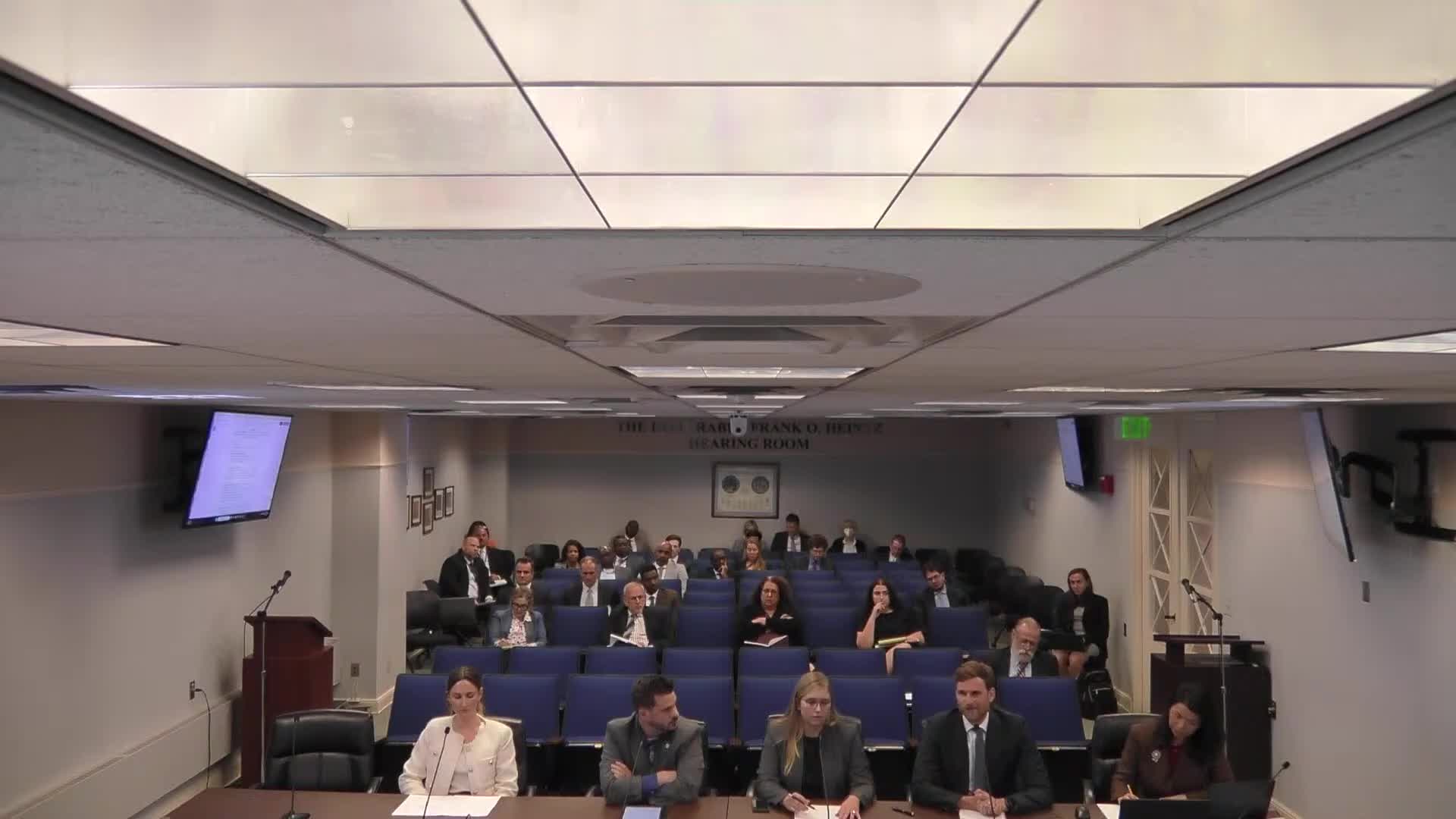Kelly Buchanan addresses Maryland solar project permitting and agrivoltaics challenges
September 08, 2025 | Public Service Commission, Independent Agencies, Organizations, Executive, Maryland
This article was created by AI summarizing key points discussed. AI makes mistakes, so for full details and context, please refer to the video of the full meeting. Please report any errors so we can fix them. Report an error »

The Public Service Commission (PSC) of Maryland convened on September 8, 2025, to discuss critical issues surrounding the permitting process for renewable energy projects, particularly in the solar sector. Key discussions highlighted the need for adequate staffing within state agencies to handle the increasing number of applications and the potential introduction of application fees to expedite project approvals.
Kelly Buchanan, a senior policy and strategy manager with Lightstar Renewables, emphasized the importance of ensuring that state agencies are sufficiently staffed to manage the permitting workload. She noted that the solar industry views time as a crucial factor, and having the necessary resources in place is essential for timely project completion. Buchanan suggested that the PSC could implement application fees for Distributed Generation Certificate of Public Convenience and Necessity (DG CPCN) to support staffing needs and attract talent in Maryland.
Buchanan also addressed concerns regarding agrivoltaics, a practice that combines agricultural use with solar energy production. She explained that recent changes to Maryland's agrivoltaics definition require ongoing agricultural production for the duration of solar projects, which typically last 25 to 30 years. This requirement aims to preserve Maryland's agricultural heritage while allowing landowners to benefit financially from solar development.
However, Buchanan pointed out that the permitting process for agrivoltaics is complex and time-consuming, often taking 24 to 36 months under optimal conditions. She highlighted the challenges developers face, including lengthy wait times for project approvals, with an average wait of 128 days for Specific Order Inclusion Determination (SOID) approvals, and some projects experiencing delays of up to 219 days.
The discussions at the PSC meeting underscored the urgent need for streamlined processes and adequate resources to support the growth of renewable energy projects in Maryland, ensuring that the state can meet its clean energy goals while maintaining its agricultural landscape.
Kelly Buchanan, a senior policy and strategy manager with Lightstar Renewables, emphasized the importance of ensuring that state agencies are sufficiently staffed to manage the permitting workload. She noted that the solar industry views time as a crucial factor, and having the necessary resources in place is essential for timely project completion. Buchanan suggested that the PSC could implement application fees for Distributed Generation Certificate of Public Convenience and Necessity (DG CPCN) to support staffing needs and attract talent in Maryland.
Buchanan also addressed concerns regarding agrivoltaics, a practice that combines agricultural use with solar energy production. She explained that recent changes to Maryland's agrivoltaics definition require ongoing agricultural production for the duration of solar projects, which typically last 25 to 30 years. This requirement aims to preserve Maryland's agricultural heritage while allowing landowners to benefit financially from solar development.
However, Buchanan pointed out that the permitting process for agrivoltaics is complex and time-consuming, often taking 24 to 36 months under optimal conditions. She highlighted the challenges developers face, including lengthy wait times for project approvals, with an average wait of 128 days for Specific Order Inclusion Determination (SOID) approvals, and some projects experiencing delays of up to 219 days.
The discussions at the PSC meeting underscored the urgent need for streamlined processes and adequate resources to support the growth of renewable energy projects in Maryland, ensuring that the state can meet its clean energy goals while maintaining its agricultural landscape.
View full meeting
This article is based on a recent meeting—watch the full video and explore the complete transcript for deeper insights into the discussion.
View full meeting
